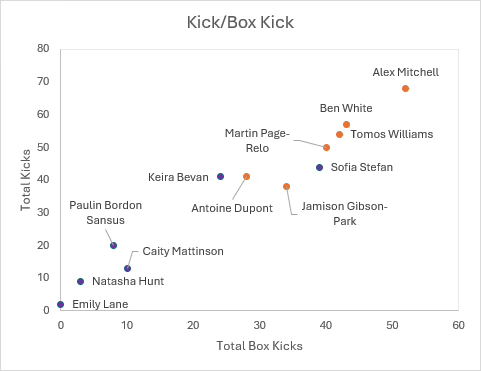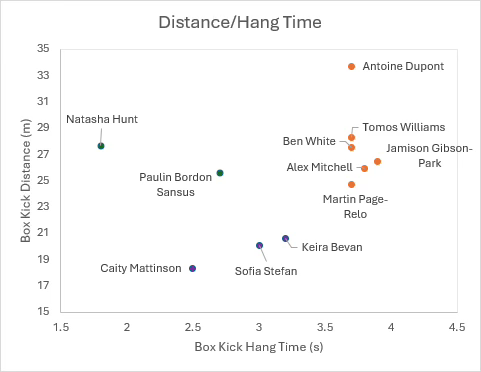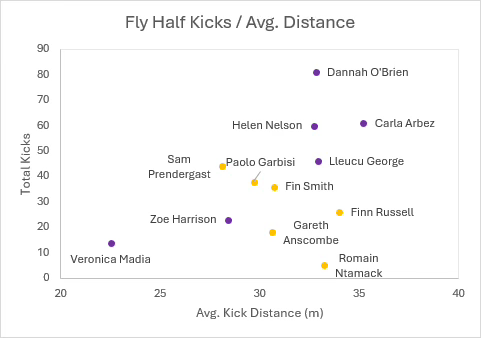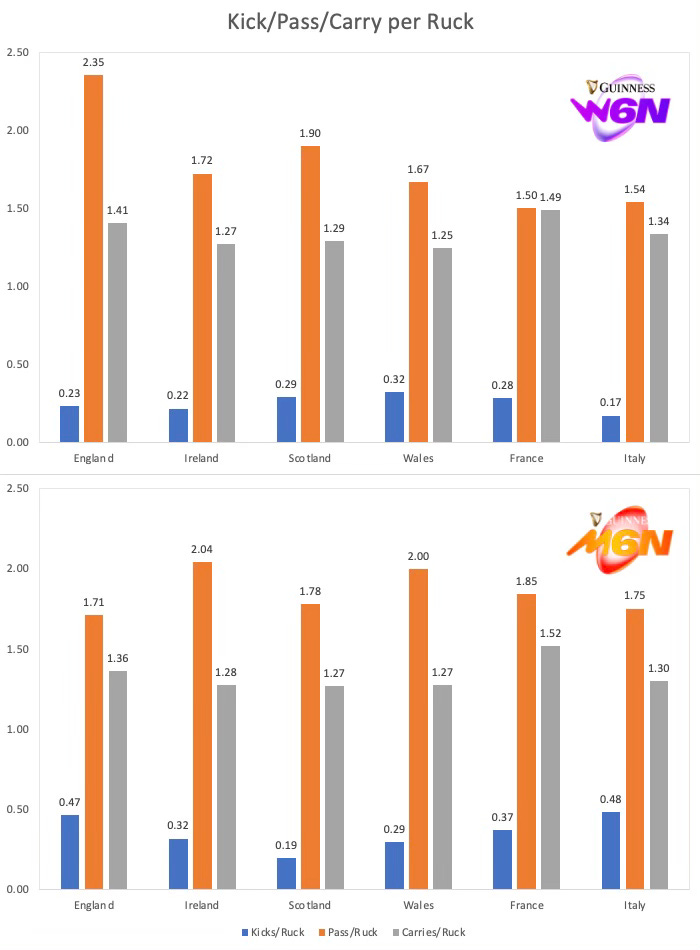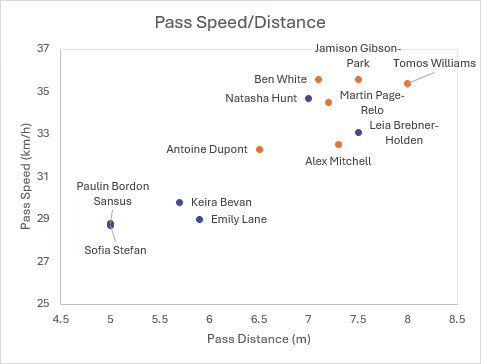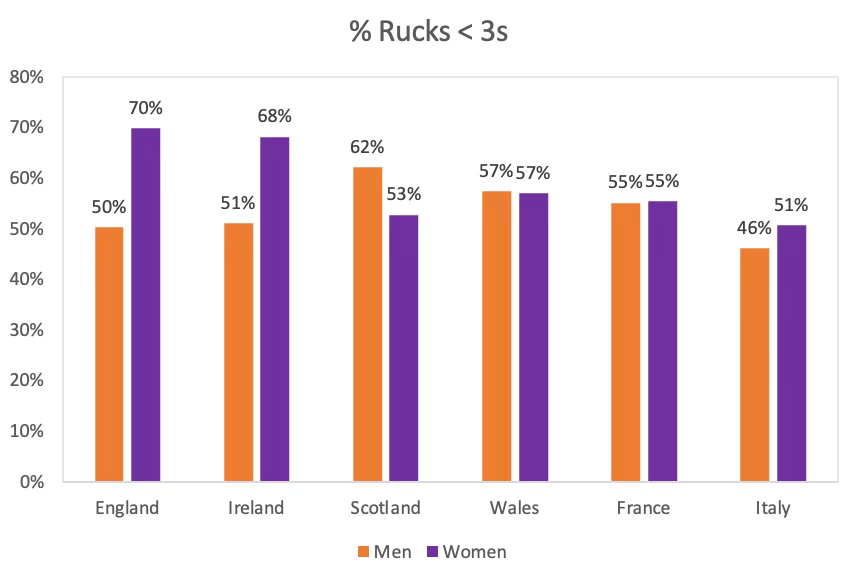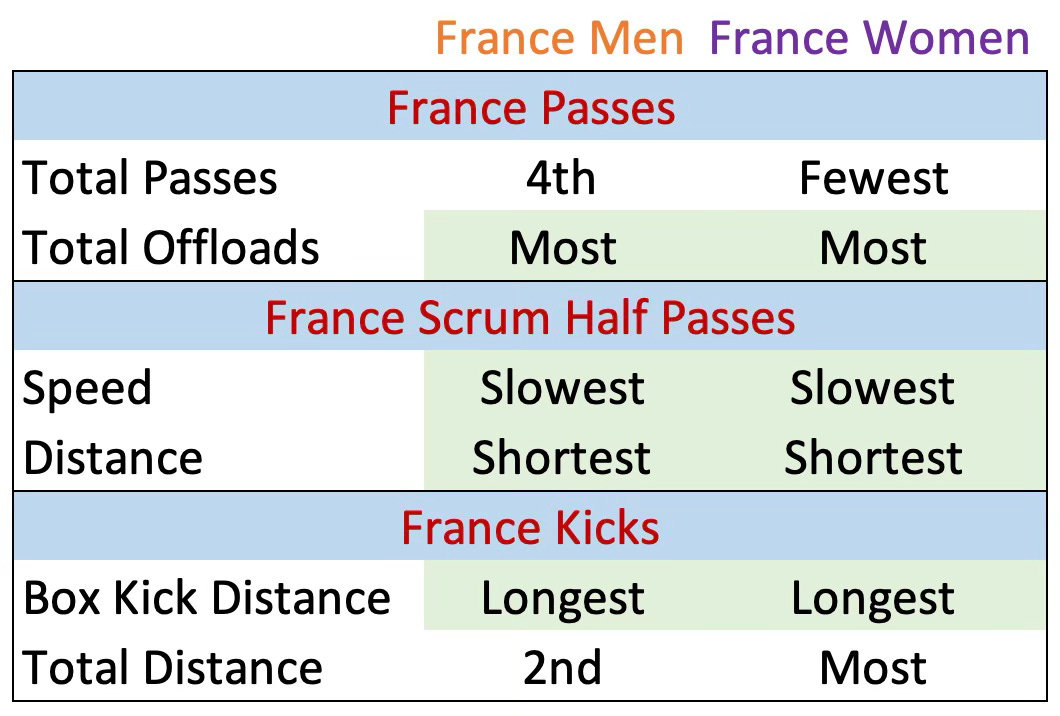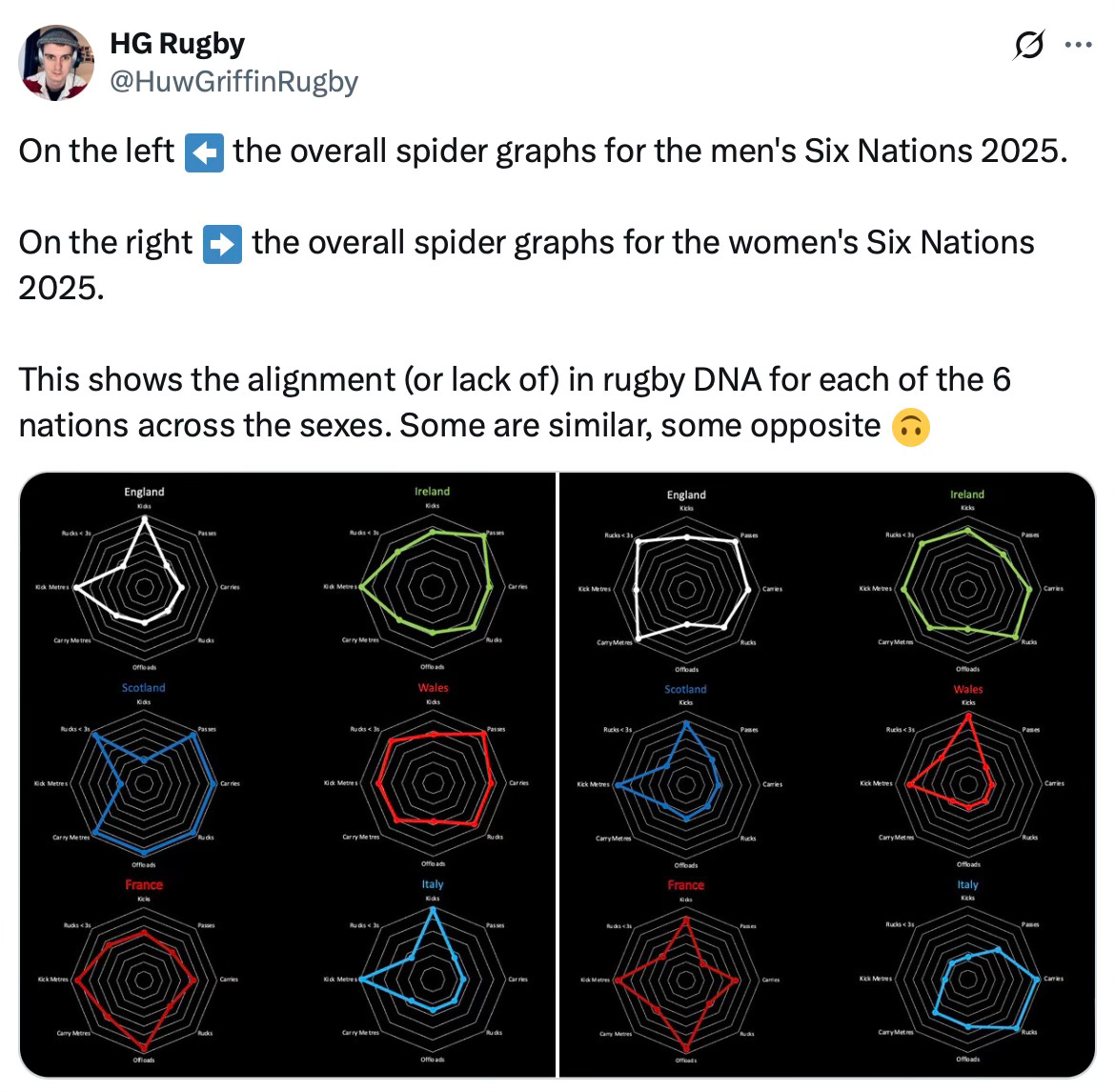Rugby DNA: Comparing Stats From Men's & Women's Six Nations 2025
Deep-diving the statistics that teach us the most from both tournaments
Comparisons between men’s rugby and women’s rugby are unavoidable. Many say that the things that make the women’s game different is what helps them enjoy it more. In this article, we will zone in on some of those differences and, more intriguingly, examine the areas which are eerily similar…
The Problem With Comparing
There are a number of problems with comparing men’s rugby to women’s rugby. Firstly, the availability of data - recent and historic - is far more limited in women’s rugby.
Secondly, it is important to put aside the better/worse mindset and simply view them as different. Finally, when comparing specific players, we see that men’s rugby players are reasonably homogeneous (there is little variation player to player in the same position) whereas in women’s rugby there can be vast and fundamental differences between players.
Kicking Games
It has become almost a cliche that kicking is less prevalent in women’s rugby, but is that actually true?
Women’s teams certainly take significantly fewer penalty kicks at the posts. There were 10 shots at goal in the Women’s 6N this year (6 by France) whereas there were 43 in the Men’s 6N.
Box kicking is also far rarer in women’s rugby. Ireland did not put up a single box kick this year, nor did Scotland’s first choice scrum half Leia Brebner-Holden. However, it does seem to be a team-by-team tactical choice as Wales and Italy box kicked a comparable amount to the men’s teams.
We see that women’s 9s get significantly less hang time on their kicks (in real terms it’s around half a second). Distances are also lower, although Mo Hunt and Bordon-Sansus did match the meterage of the men.
The above graph is a good example of the homogeneity of men’s players and the variance of women’s players, with all 6 men having an average hang time within 0.2 seconds whereas the women are spread over multiple seconds.
Women’s 9s kicking less means that women’s 10s kick more. In fact, we see that 4 women’s fly-halves kicked more than any men’s fly-half and, on average, further than all bar 2 (Romain Ntamack only kicked 5 times, meaning his average length should be taken with a grain of salt). France’s Carla Arbez kicked more and further than any men’s 10.
However, it is also true that a player is not always going for maximum distance when kicking the ball. For instance, England’s Holly Aitchison kicked the ball 21 times with an average distance of 22.0m, less than any other player on this graph, suggesting she was making different kinds of kicks to her teammate Zoe Harrison who was kicking around 35% further.
The distance advantage for the women could be explained if they are primarily making clearance kicks whilst the men are much more varied in the types of kicks they make.
Phase Play
The men’s and women’s 6N saw a very similar number of overall rucks (within 5%) but significant differences in what happened at those rucks.
The men’s teams normally kick and pass more per ruck. This suggests women’s rugby sees more one-up carries. Scotland are the outlier here, as their women pass and kick more per ruck. England women also pass significantly more than the men.
The top passer in every team is the scrum half. By comparing pass lengths and speeds we see that Mo Hunt and Leia Brenbner-Holden have stats that are very comparable to the men’s 9s. The other women are lower than all of the men in distance and speed.
Interestingly, the pass speed of the scrum half does not appear to be linked to ruck speed. For instance, Scotland were the only nation where the women had a lower percentage of rucks below 3 seconds than the men, despite having the 9 with the second fastest pass speed.
Conversely, Emily Lane has a pass speed over 6 km/h slower than Jamison Gibson-Park but Ireland women’s rucks were significantly faster (on average) than Ireland men’s. Once again, England women play with considerably more dynamism than England men.
National DNA
When reviewing the overall data, it is striking how similar some of the characteristics are between France men and France women. Specifically, how they pass the ball appears to be different the over other team.
French teams throw more offloads than any other nation. In fact, France women threw the most offloads of any 6N team with 68 in 5 games. Conversely, the total number of regular passes is low; the least of anyone in the women’s 6N and 4th overall in the men’s.
French teams have a particular way of playing off 9. Both Pauline Gordon-Sansus and Antoine Dupont (both of whom play for Toulouse) throw the shortest and the slowest passes of their peer group. Furthermore, both make the longest box kicks of scrum-halves. The only other 9 to exhibit similar traits to the French is Italy’s Sofia Stefan, who has also spent time playing in France.
Ireland also appear to have significant commonality between their women’s and men’s teams, characterised by a high ruck count. Whilst most team’s stats tend to spike in one particular metric, Irish teams tend to relatively even across the board. This is indicative of a team that enjoys a high percentage of possession - hence a lot of rucks.
We know that the Irish Rugby is very aligned in terms of game model and coaching being cascaded down their rugby pyramid by the IRFU (see the similarity in how the 4 men’s provinces play in the URC) so similarity between the men’s and women’s teams isn’t surprising.
In the case of Scotland and Italy, their men’s and women’s teams play in almost exact opposite ways whilst Wales’ only commonality between the two is their lack of offloads. England women, as discussed, play far more expansively than England men.
Being different is not necessarily a bad thing, but does suggest there may be lack of an aligned game model coming down from the national union. The thing that Italy, Scotland and Wales have in common is that most of their women’s players play club rugby abroad in either England or France, making it far more difficult to align their characteristics to a union model.
Thanks for reading! If you enjoyed it please consider sharing a link with a mate, it really helps the page grow! Stay tuned for more women’s content on my YouTube Channel this weekend…
Link → https://www.youtube.com/@HuwGriffinRugby/featured





